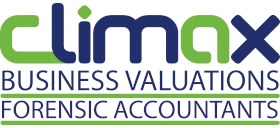This was my response to a question from a business owner trying to attract venture capitalist investment
You need to understand that there are different ways of valuing a business which are used for different purposes. Almost all valuations are forward-looking in nature, so the past isn’t relevant except as being an indicator of the likely future. So for example, in something like a divorce, the courts are happy to support the forward looking valuation concept, but because courts like “evidence”, even though the valuation is forward looking, I have to heavily take into account what has already happened as this can be proven. What “might” happen in the future can’t be proven so the courts aren’t too keen on taking projections into account unless they can be supported by some sort of evidence, like income from current contracts or forward bookings for example.
The good news for you is that investors understand the risk/return nature of business and only ever invest in a company based on what it is likely to return to them in the future. So investors by their nature are happy to consider projections. The job of a good information memorandum is to persuade the investors that the risks of the projections not turning out are low, which means they will likely accept a lower return for any given level of projected profit, which means they will effectively pay more for the investment.
So what you need to do is ask yourself on what basis do you want the business valued and how will you use the valuation report in the context of what you are trying to achieve.
For most valuations (even for people looking at selling their business or attracting investors) I would start with the fundamental (and provable) value of the business first. Then we have a “financial” valuation as a base level. This report would typically only be an internal document that you wouldn’t show anyone else. It is likely that if the strategic elements of the business didn’t work out, then this value would represent a fair price for the business if it was to be generally listed for sale. Because at that level we are predicting the process that most business valuers would go through if advising a client whether to buy a particular business based on the evidence.
Once the fundamental value of the business is understood, then I would consider playing around with some hypotheticals and projections and see what kind of valuation would be possible if those projections came to fruition. This would be at the “strategic” value level, where we could begin to factor in things like synergies and economies of scale. Whether or not you showed the full report or an just an extract to potential investors is up to you. There is no requirement to show investors a formal business valuation, but if you don’t trust them to “work it out” themselves then it’s often worthwhile to “do one for them” which would have very clear methods and assumptions that they could follow and even have critiqued by their own advisors.
Remember to be careful who you trust in this space as there are a lot of conflicting interests and seedy characters in the “investment” landscape (VC firms, business brokers, financiers etc). I act independently at all times and have no agenda other than giving you a true valuation.
